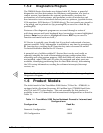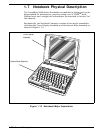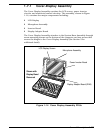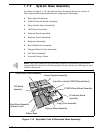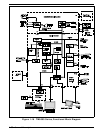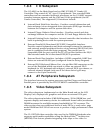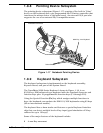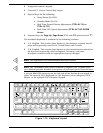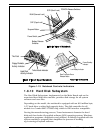
1.8.1 System Processor
The System Processor function for the notebook is implemented on the Main
Board using an Intel Pentium P54-C Superscalar Processor Chip. The
processor operates in conjunction with RAM and ROM Memory and other
control logic (E.G. the ACC2056 IC) to process software instructions (BIOS,
DOS, Windows, Applications).
The processor communicates with hard disk and the memory components
using a high speed, VL-Local Bus. All other high speed peripheral
components are driven by the 33-MHz PCI Bus.
The PCI Bus Controller Chip (ACC2188) provides the bridge between the
64-bit VL-Local Bus and the 32-bit, 33 MHz Peripheral Components
Interface (PCI) Bus.
The Processor also executes the BatteryPro software and interacts with
other hardware logic to provide the power savings features for the notebook.
These features include controlling CPU clock speeds, reducing clock speeds
whenever possible (eg. when performing floppy drive accesses), powering
down unused devices, etc.
1.8.2 Memory Subsystem
The memory subsystem, implemented on the Main Board, includes ROM
and DRAM memory. Primary control for the memory subsystem is provided
by the ACC2056 Core Logic Chip.
1.8.2.1 DRAM Memory
All Pentium-based notebooks (Intel P54-C CPU) contain 8MB of 70 ns
page-interleaved DRAM and 256KB of 15-ns static RAM for external cache.
DRAM memory on the Pentium versions can be expanded to 32 MB using
two DRAM Expansion Board options. An additional 24 MB may be user
installed using a 16 MB Expansion RAM Module and an 8 MB Shuttle RAM
Expansion Module described in more detail later.
1.8.2.2 ROM Memory
All versions of the TM5000 notebook family use a "Flash" ROM that contains
both the main system BIOS and the VGA BIOS. The Flash ROM contains
"Boot Block" logic that allows downloading new versions of BIOS without
destroying the Boot Load area.
General Description 1-31




